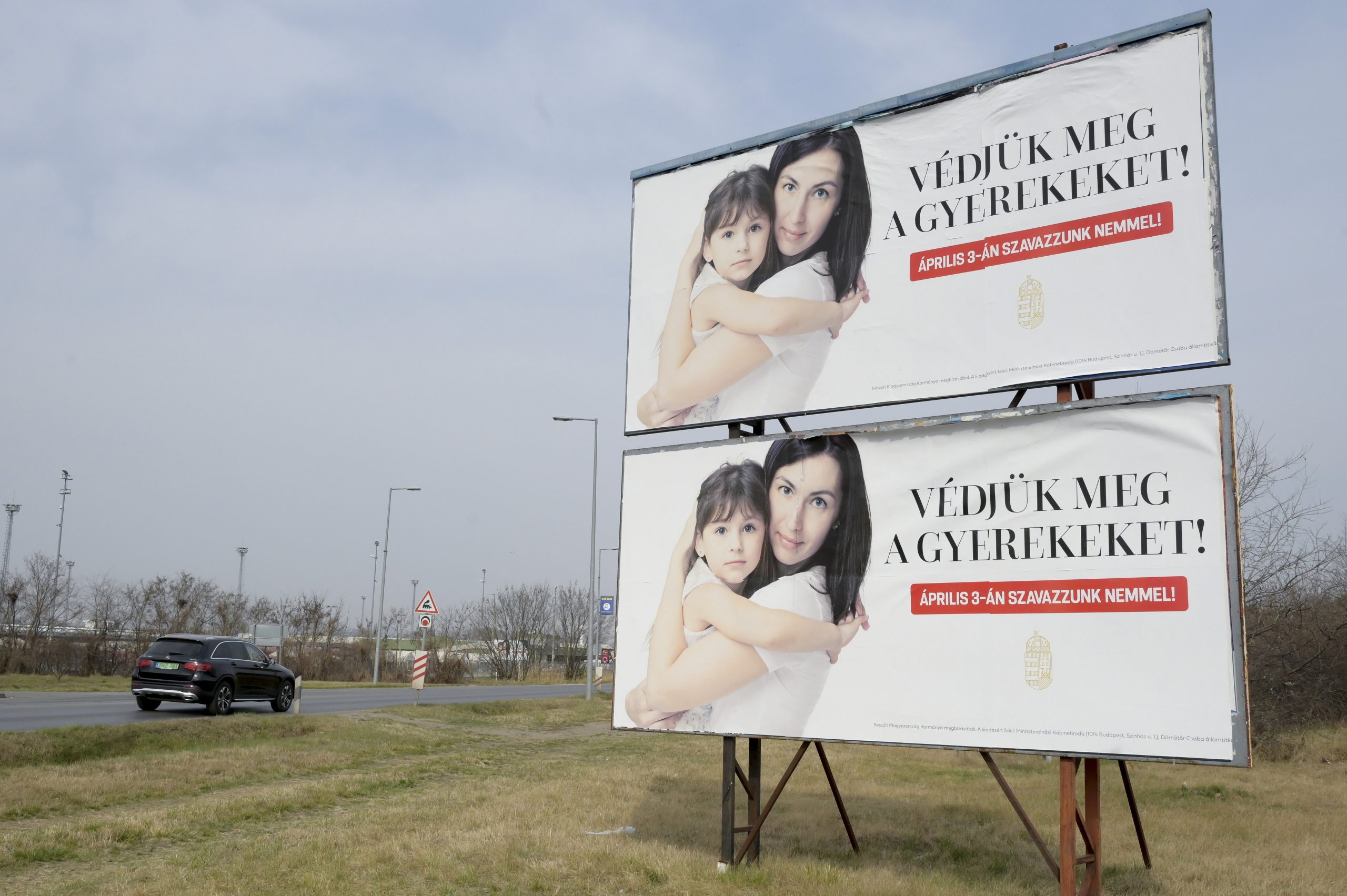
The referendum was initiated by the government last summer citing the importance of protecting children. Citizens are asked to respond to four questions.Continue reading

A referendum initiated by the government with four questions on child protection was held at the same time as the parliamentary elections, but failed to clear the hurdle for validity. Prime Minister Viktor Orbán announced last summer, shortly after the so-called anti-pedophile law came into force, that the government would initiate a referendum on the issue of child protection. Orbán justified the government’s decision by saying that “Brussels has clearly attacked Hungary in recent weeks because of the child protection law.”
This article was originally published on our sister-site, Ungarn Heute.
On the day of the parliamentary elections, there was also a referendum on the protection of children, such as, among other things, a ban on gender reassignment surgery. Although the percentage of no votes was high, relatively many (about 20% of voters) cast an invalid vote on Sunday on the four questions or did not even ask for the referendum voting-paper, only those for the general election.
The national referendum is valid if more than half of all voters cast a valid vote, and it is successful if more than half of the voters who cast a valid vote give the same answer to the question.
In the case of the current referendum, the validity threshold was 4,107,652.
The National Election Office has published the following data on its official website:
Valid votes: 3 521 425 (44.46%)
Invalid votes: 1 590 772 (20.08%)
Not voted: 2 753 911 (35.46%)
Number and proportion of yes/no votes
Yes: 269 689 (7.66%)
No votes: 3 251 736 (92.34%)
Valid votes: 3 492 688 (44.09%)
Invalid votes: 1 619 509 (20.45%)
Not voted: 2 809 048 (35.46%)
Number and ratio of yes and no votes cast
Yes: 143 448 (4.11%)
No: 3 349 240 (95.89%)
Valid votes: 3 484 686 (43.99%)
Invalid votes: 1 627 511 (20.55%)
Not voted: 2 809 048 (35.46%)
Number and percentage of yes/no votes
Yes: 163 048 (4.68%)
No: 3 321 638 (95.32%)
Valid votes: 3 482 505 (43.96%)
Invalid votes: 1 629 692 (20.57%)
Not voted: 2 809 048 (35.47%)
Number and ratio of yes and no votes cast
Yes: 168 146 (4.83%)
No votes: 3 314 359 (95.17%)
Not only the opposition but also non-governmental organizations called on Hungarians to vote invalidly. The Hungarian Civil Liberties Union (TASZ), a non-governmental civil rights organization, believed before the elections that the four questions asked in the debate served propaganda purposes. They stated that the referendum questions were hateful and marginalized sexual and gender minorities, and therefore, in line with the opposition parties, called on voters to invalidate their votes.
The first of these events was the new republic’s “four-yes” referendum in November 1989, when Hungarians decided on the dissolution of the “Workers’ Guard,” the abolition of state party organizations, the settlement over the assets of state party MSZMP, and the election of the head of state. The turnout of 58.03% at that time has not been reached since. The other occasion on which more than half of eligible voters (50.51% turnout) cast their ballots was the referendum in 2008, known as the “social” or “three-yes” referendum, in which people could express their opinions on the abolition of tuition fees, fees for health care visits (GP and other outpatient medical care), and daily fees for care received in hospitals.
Turnout for our other five referendums ranged from 14.01 to 49.24 percent. The previous highest turnout was in 1990 when a referendum was held on a direct presidential election. In 1997 there was a referendum on NATO membership, in 2003 on accession to the European Union, and in 2004 on dual citizenship and hospital privatization. Since the rules of validity have been risen in the meantime, a turnout of less than 50 percent was not always invalid back then. The referenda on NATO and EU membership were valid, with a high yes vote.
A national referendum was last held in 2016. The Orbán government’s so-called “quota referendum” asked the question: “Do you want the European Union to enforce the forced relocation of non-Hungarian citizens in Hungary without parliamentary approval?” Although 98% voted no, the referendum was also invalid. However, according to Prime Minister Viktor Orbán’s explanation, the result was still “politically valid.”
Sources: Valasztas.hu, Telex, Magyar Nemzet
Featured image via Lajos Soós/MTI